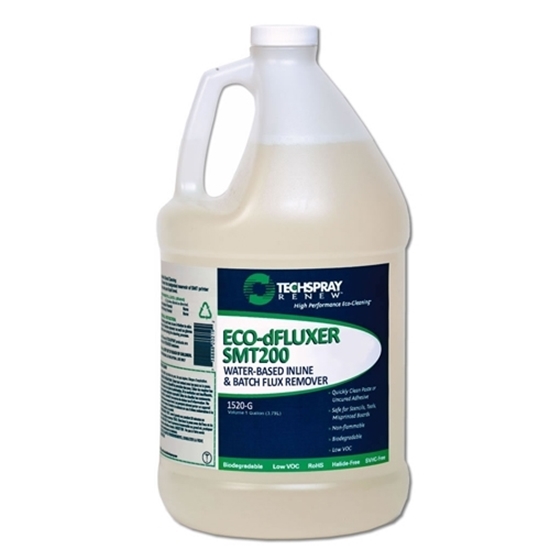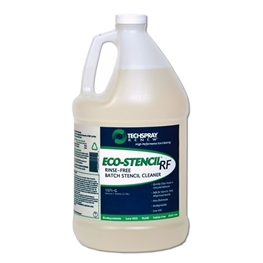
Eco-dFluxer SMT200
Inline & batch water-based flux remover for sensitive metals
FAQ's
Can I use purified water instead of deionized water to dilute Eco-dFluxer?
“Purified” is a bit of a general term, so let me break apart the potential issues:
- Distilled water shouldn’t be a problem.
- Reverse osmosis filtered water may or may not be a problem depending on the water source. Some dissolved minerals could conceivably get through, and minerals are generally going to be ionic.
- Ionic contamination along with moisture and current can lead to dendritic growth. DI rinse at the end of the cleaning cycle could reduce this risk.
- Contamination could lead to increased foaming.
How do you know the safe exposure limit of a degreaser, contact cleaner, or flux remover?
The personal hazard associated with a solvent is often defined using Threshold Limit Value (TLV), which is the recommended average exposure in an 8-hour day, 40 hour work week. The lower the TLV of a particular substance, the less a worker can be exposed to without harmful effects. TLV is stated on the SDS of chemical products, in additional to recommended personal protection equipment (or PPE). The threshold limit value of a solvent is generally set by the American Conference of Governmental Industrial Hygienists (ACGIH). The unit of measure is Parts Per Million (PPM).
Can I use a spigot / dispensing spout on the 55-gallon plastic drum?
Yes, HDPE (plastic) drums are designed to accept commonly available 2” threaded spigots / spouts. Spigots are available at distributors, like at https://www.grainger.com/product/GRAINGER-APPROVED-Drum-Tap-6PFN4.
You did not finish submitting your information to request a sample





